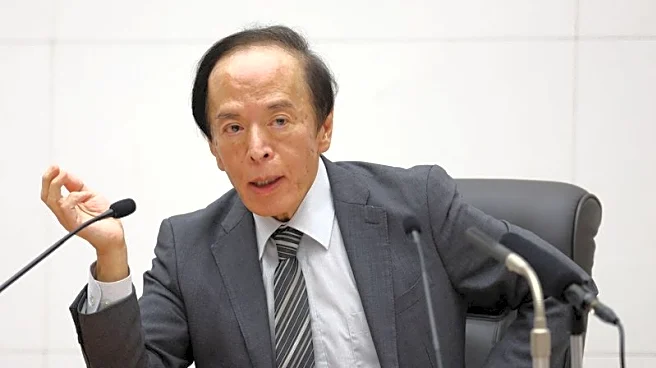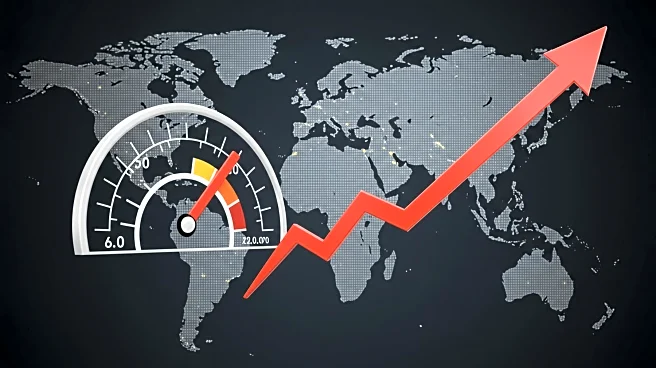What's Happening?
Manufacturing CEOs in the U.S. have reported a decline in business confidence, influenced by recent tariff decisions and legislative changes. According to the latest CEO Confidence Index survey conducted by Chief Executive, manufacturing CEOs rated current business conditions at 4.9 out of 10, marking an 8 percent decrease from the previous month. This decline is the first since May and is notably lower than the ratings given by non-manufacturing CEOs, who scored conditions at 5.3 out of 10. Despite the current downturn, manufacturing CEOs forecast an improvement over the next twelve months, predicting a rise to 5.6 out of 10. However, this forecast is still below the 5.7 rating anticipated by non-manufacturers. The primary factors driving this outlook are tariffs and the geopolitical atmosphere, which have led to factories cutting back or delaying purchases due to increased costs.
Why It's Important?
The decline in business confidence among manufacturing CEOs is significant as it reflects broader economic challenges facing the U.S. manufacturing sector. Tariffs and geopolitical tensions are creating uncertainty, impacting investment decisions and potentially slowing economic growth. This sentiment could lead to reduced manufacturing output and job creation, affecting the overall economy. Manufacturers are crucial to the U.S. economy, and their outlook can influence policy decisions and economic strategies. The forecasted improvement suggests some optimism, but the current low confidence levels highlight the need for stable trade policies and geopolitical relations to support manufacturing growth.
What's Next?
Manufacturing CEOs are likely to continue monitoring tariff developments and geopolitical changes closely. The industry may advocate for policy adjustments to mitigate tariff impacts and seek more favorable trade agreements. Additionally, manufacturers might explore strategies to adapt to the current economic environment, such as diversifying supply chains or investing in technology to enhance efficiency. Stakeholders, including policymakers and industry leaders, will need to address these challenges to foster a more stable and conducive environment for manufacturing growth.












